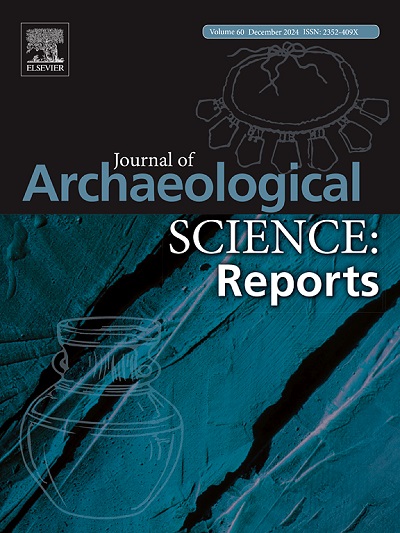New evidence for long distance interaction at Keros: Carnelian bead analysis using scanning electron microscopy
IF 1.5
2区 历史学
0 ARCHAEOLOGY
引用次数: 0
Abstract
Recent investigation of materials from the enigmatic Cycladic sites of Kavos and Dhaskalio have greatly expanded our understanding of the Early Bronze Age Aegean world. Here the authors examine six carnelian beads from these sites to reconstruct their production sequence and possible regional origin. Analysis of microscopic indications of bead production methods allowed a high-resolution reconstruction of the technologies involved at each step. Scanning electron microscopy (SEM) was employed to examine silicone impressions of drill holes made from these beads. This served to document the characteristic tool marks used to perforate the Keros and Dhaskalio beads. When compared to the SEM images of experimentally-reproduced drillings and those from beads whose drilling agents have already been identified, the identification of the types of drills used was possible. Since different production methods and drilling styles are diagnostic of different regional craft traditions it was then possible, using an interregional comparative study, to suggest the workshop traditions of origin for these beads. Results indicate that long distance import was likely for most of these beads while two may have been produced more locally in Anatolia. Of special significance is the one carnelian bead from Dhaskalio that we demonstrate derived from the Indus Valley craft tradition, perforated with a distinctly Indus-style drill and made in a shape common among Indus-affiliated beads. This in turn has major implications regarding the connectivity of the early Keros and Dhaskalio community.
Keros长距离相互作用的新证据:使用扫描电子显微镜分析Carnelian头
最近对神秘的基克拉迪遗址卡沃斯和达斯卡利奥的材料的调查极大地扩展了我们对青铜时代早期爱琴海世界的理解。在这里,作者研究了这些遗址的6颗玛瑙珠,以重建它们的生产序列和可能的区域起源。对制珠方法的显微特征进行分析,可以对每一步所涉及的技术进行高分辨率重建。利用扫描电子显微镜(SEM)检查由这些珠子制成的钻孔的硅酮印痕。这有助于记录用于穿孔Keros和daskalio珠子的特征工具标记。将实验重现的钻孔的扫描电镜图像与已经鉴定出钻孔剂的珠子的扫描电镜图像进行比较,可以确定所使用的钻头的类型。由于不同的生产方法和钻孔风格是不同地区工艺传统的诊断,因此有可能使用区域间比较研究来建议这些珠子的起源车间传统。结果表明,大部分珠子可能是长途进口的,而有两颗珠子可能是在安纳托利亚当地生产的。具有特殊意义的是来自达斯卡利奥的一颗玛瑙珠,我们展示了它来自印度河流域的工艺传统,用一种明显的印度河风格的钻头穿孔,并以与印度河有关的珠中常见的形状制成。这反过来又对早期Keros和daskalio社区的连通性产生了重大影响。
本文章由计算机程序翻译,如有差异,请以英文原文为准。
求助全文
约1分钟内获得全文
求助全文
来源期刊

Journal of Archaeological Science-Reports
ARCHAEOLOGY-
CiteScore
3.10
自引率
12.50%
发文量
405
期刊介绍:
Journal of Archaeological Science: Reports is aimed at archaeologists and scientists engaged with the application of scientific techniques and methodologies to all areas of archaeology. The journal focuses on the results of the application of scientific methods to archaeological problems and debates. It will provide a forum for reviews and scientific debate of issues in scientific archaeology and their impact in the wider subject. Journal of Archaeological Science: Reports will publish papers of excellent archaeological science, with regional or wider interest. This will include case studies, reviews and short papers where an established scientific technique sheds light on archaeological questions and debates.
 求助内容:
求助内容: 应助结果提醒方式:
应助结果提醒方式:


